In today’s diverse classrooms, students come with a wide range of abilities, needs, and challenges. To help every student thrive, schools rely on specialized support services like occupational therapy. Occupational therapy for schools is a critical component of ensuring students can access and participate in educational activities, regardless of physical, sensory, or cognitive challenges. School-based occupational therapy goes beyond academics, focusing on helping students develop the skills needed to succeed in all aspects of their school life.
What is School-Based Occupational Therapy?
Occupational therapy in schools is a specialized service that supports students who face difficulties in performing everyday school-related tasks. These challenges may stem from developmental delays, physical disabilities, sensory processing issues, or other factors.
The primary goal of school-based occupational therapy is to enable students to fully participate in academic and extracurricular activities. This often includes improving skills such as handwriting, fine motor coordination, attention span, and self-regulation.
How Does Occupational Therapy for Schools Work?
Occupational therapists (OTs) working in schools collaborate closely with teachers, parents, and other professionals to identify and address the needs of students. Here’s how the process typically works:
- Assessment and Evaluation:
Occupational therapists assess students to identify specific challenges that may impact their ability to learn or participate in school activities. This could involve evaluating motor skills, sensory responses, or cognitive abilities. - Goal Setting:
Based on the assessment, therapists work with educators and families to create individualized goals tailored to the student’s needs. These goals are often part of an Individualized Education Plan (IEP). - Intervention:
Interventions are designed to help students develop the skills they need. This may include one-on-one sessions, group activities, or classroom-based strategies. - Collaboration and Training:
OTs also work with teachers and staff, offering guidance on how to adapt lessons or environments to better support students.
The Benefits of School-Based Occupational Therapy
Occupational therapy for schools offers numerous benefits, ensuring that students have the support they need to succeed academically, socially, and emotionally. Key advantages include:
- Improved Academic Performance:
By addressing fine motor skills, such as handwriting or keyboard use, OTs help students complete assignments and participate fully in classroom activities. - Enhanced Social Skills:
Occupational therapy helps students develop the social and emotional skills needed to interact with peers and build relationships. - Increased Independence:
Students learn strategies to manage their challenges, empowering them to become more independent in their learning and daily activities. - Support for Teachers:
OTs equip teachers with tools and techniques to create inclusive classrooms, benefiting all students.
Examples of School-Based Occupational Therapy Activities
Occupational therapists use a variety of techniques and activities tailored to individual students. Common examples include:
- Fine Motor Skill Development:
Activities like cutting with scissors, stringing beads, or practicing handwriting to improve hand-eye coordination and dexterity. - Sensory Integration Strategies:
Techniques to help students manage sensory sensitivities, such as using fidget tools, weighted blankets, or sensory-friendly classroom setups. - Self-Regulation Support:
Exercises and routines to help students focus, manage emotions, and transition smoothly between activities. - Adaptation and Accessibility:
Recommending assistive devices, such as pencil grips, adaptive seating, or communication tools, to make tasks more manageable.
Why Occupational Therapy is Essential in Schools
The role of occupational therapy extends far beyond supporting individual students. It plays a pivotal role in creating a more inclusive and equitable educational environment. Here’s why it’s indispensable:
- Bridging Gaps in Learning:
For students with disabilities or developmental delays, occupational therapy helps close the gap between their abilities and educational demands. - Reducing Barriers to Participation:
OTs work to eliminate physical, sensory, or cognitive barriers, enabling students to engage fully in school activities. - Promoting Mental Health:
By addressing challenges that can cause frustration or low self-esteem, occupational therapy contributes to students’ overall mental well-being. - Preparing for the Future:
Skills learned through occupational therapy not only help students succeed in school but also prepare them for life beyond the classroom.
Challenges in Implementing School-Based Occupational Therapy
While occupational therapy is invaluable, schools often face challenges in providing these services. These include:
- Limited Resources:
Budget constraints can make it difficult to hire enough qualified occupational therapists or purchase necessary equipment. - Awareness and Understanding:
Some educators and parents may not fully understand the benefits of occupational therapy, leading to underutilization of services. - High Caseloads:
OTs often manage large numbers of students, which can limit the amount of individual attention each child receives.
How Educational Therapy Professionals Supports Schools
At Educational Therapy Professionals, we understand the critical role of school-based occupational therapy in fostering student success. Our team of experienced occupational therapists works with schools to provide tailored solutions that meet the unique needs of each student. Whether it’s assessments, intervention strategies, or staff training, we’re here to help schools create inclusive environments where every child can thrive.
If your school is looking to enhance its occupational therapy program, contact Educational Therapy Professionals today. Together, we can empower students to reach their full potential.
Occupational therapy for schools is a cornerstone of inclusive education, ensuring that every student has the tools and support they need to succeed. By investing in school-based occupational therapy, we can create learning environments where all students can excel, no matter their challenges.





